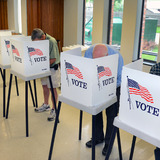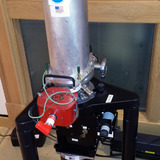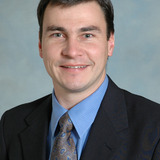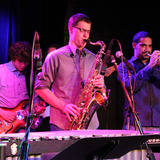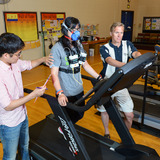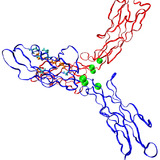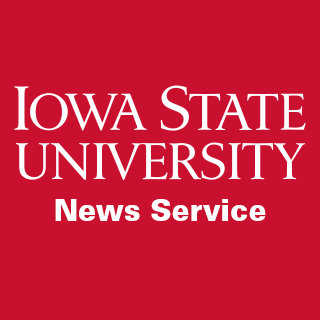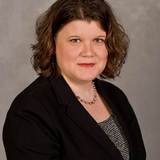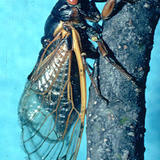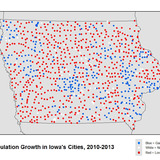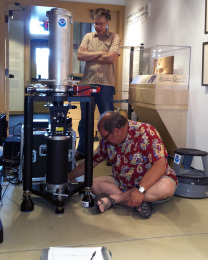News Archive
Tuesday, June 24 2014
-
Iowa State researchers find evidence of growing polarization in U.S.
To better understand the growing political divide in America, Iowa State University researchers developed a technique to determine if election results truly represent the “will of the people.” Their study of ballot data from the Cambridge, Massachusetts, City Council elections provides new evidence of the growing polarization of U.S. voters.
-
ISU prof: No paid leave for families is shameful
President Obama outlined several initiatives aimed at improving workplace flexibility and access to affordable child care as part of a White House Summit on Working Families. The president highlighted the fact that the U.S. is the only developed country to not offer government-sponsored paid maternity leave – a fact that Susan Stewart, an associate professor of sociology at Iowa State University, says needs to change.
-
Measuring Ames' gravity
Daniel Winester, seated, and Franek Hasiuk, standing, set up a gravimeter inside the Christian Petersen Art Museum on June 21. Winester, of the National Geodetic Survey, set the instrument over a brass gravity mark a crew set in the museum floor last summer. The mark allows researchers to do any follow-up studies at the same spot. Over the course of 24 hours, the nearly $2 million instrument measures a place's absolute gravity. Hasiuk, an assistant professor of geological and atmospheric sciences, says gravity varies depending on your distance from the Earth's center and the material underground. He has an explanation here. Larger image. Photo by Mike Krapfl.
-
Iowa State University veterinary researchers use forensic technology to track down drug residues in milk
Veterinarians at Iowa State University are using advanced forensic techniques and the same technology used by crime scene investigators to monitor drug residues in milk and meat. The ISU researchers work with other veterinarians and producers to strengthen food safety and make sure animals are medicated properly.
-
Iowa State student-engineers tune their open-wheel racer for speed, reliability
Iowa State's Formula SAE Team has been out testing, repairing and improving its open-wheel racing car. Team members will race for real later this week in Lincoln Nebraska. The team is hoping -- and working -- for fast and reliable racing.
-
Why your office should be like a jazz jam session
It doesn’t matter whether you work on an assembly line or in a maze of cubicles – every organization has a culture defined by its rhythm and harmony, much like music. In the day-to-day grind at work, we don’t give much thought to our office culture, but David King, an associate professor of management at Iowa State University’s College of Business, says we should.
-
ISU researchers test accuracy of fitness bands and find way to correct self-report errors
Have a fitness band or thinking about buying one? Iowa State University researchers tested eight different bands to determine the accuracy of each model. The activity monitors make it easy for anyone with weight loss or other health goals to track their physical activity and calories burned, but an Iowa State University study found not all devices are created equal.
-
Iowa State University energy efficiency experts are helping farmers save money
From limiting tillage to shifting tractors into a higher gear, ISU efficiency experts are showing farmers how to save a chunk of change through energy efficiency.
-
Iowa State, Ames Lab researchers find the mechanism that forms cell-to-cell catch bonds
Strong cell-to-cell bonds are important to heart health and fighting cancer. The bonds connecting heart cells have to withstand constant forces caused by continuous pumping. And, in some cancers, bonds no longer resist forces, allowing cancer cells to detach and spread. Iowa State’s Sanjeevi Sivasankar and his research group are studying the biophysics of certain biological bonds. Their most recent findings have just been published online by Nature Communications.
-
Regents endorse new state funding formula
The Iowa Board of Regents on June 4 accepted a task force recommendation to change how the state's general university appropriation is allocated among the three regent universities. Beginning July 1, 2015, 65 percent of the appropriation will be allocated according to enrollment. The remaining 35 percent will be tied to performance outcomes. ISU President Steven Leath called the change "a positive" for Iowa State. He noted that he's been talking about the need to assure access and affordability, as well as quality, for students since he arrived in Ames. The additional funding, he said, will help Iowa State "maintain a quality educational experience while enhancing access and affordability."
-
Katharine Johnson Suski named admissions director at Iowa State University
Katharine Johnson Suski, director of admissions at Southern Illinois University, Carbondale, will be Iowa State’s new director of admissions.
-
Iowa State remains a National Center of Academic Excellence for cyber security
Iowa State University has once again won designation as a National Center of Academic Excellence in Information Assurance/Cyber Defense Education. Iowa State has been the only Iowa school to win the designation from the National Security Agency and the Department of Homeland Security.
-
Periodical cicadas will soon blanket central Iowa woodlands, according to Iowa State entomologist
An Iowa State University entomologist is encouraging central Iowans to enjoy their front-row seats as countless periodical cicadas emerge from the ground to blanket wooded areas, an event that occurs once every 17 years.
-
ISU analysis of census data shows majority of Iowa communities are shrinking
An analysis of U.S. Census Bureau data found more than 60 percent of Iowa cities lost population since 2010. Much of the growth – around 52 percent – occurred in cities with populations between 10,000 to 49,999 residents. Cities with fewer than 500 residents were hit the hardest, losing 3 percent of their combined population.
